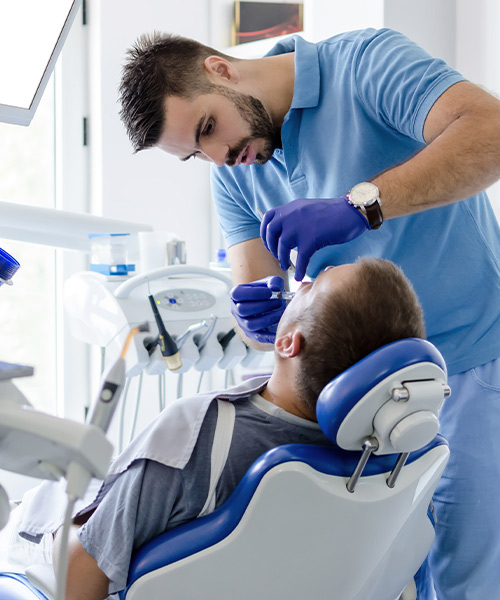Bone Grafting
Restorative Dentistry

Removing a diseased or broken tooth is no longer about simply extracting the tooth. Today, it is all about atraumatically removing the tooth with the best surgical technique. The goal is to leave the patient with minimal postoperative pain and guide the healing in the proper way to preserve the bone for future tooth replacement. That is where bone grafting, also known as socket grafting, enters the picture.
Benefits of Bone Grafting
When we think about replacing teeth, implants are our first thought. In order to place an implant, we need bone to support it. If a tooth is extracted and the ridge is left to heal on its own, it often leaves a skinny peak of bone. It is very hard to place an implant in a narrow ridge without first having to undergo more extensive procedures.
An additional benefit of bone grafting is to maintain the appearance of your facial structure. Without a tooth to support the cheek, a gap exists between it and your jaw. Over time, this may lead to sagging at the jowls or a caved-in appearance in the upper mouth area, depending on where the missing tooth is.
Whether you have been missing a tooth for quite a while or still need to have a tooth extracted, a bone graft can help solidify your jawbone structure, maintain the firmness of your cheeks, and prepare your jaw for a dental implant.
The easiest thing to do is not allow that to happen in the first place. With socket grafting, you can maintain the ridge after tooth extraction so that implants can be placed in a wide, healthy ridge.
